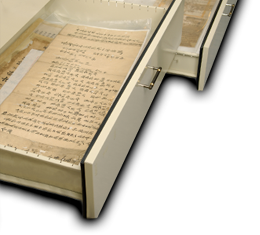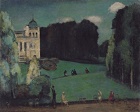Publication date: 22 Apr 2019
Author: Jao Tsu-hsien |Staff member of the Archives of Institute of Taiwan History
On the Open House day in 2018, the Archives of the Institute of Taiwan History featured an exhibition, Travel Memories II—Taiwanese Painters’ Landscape Sketches, from digital records collected by the Archives in recent years. This exhibition selected four Taiwanese painters, Yen Shui-long, Liu Chi-hsiang, Chen Cheng-po, and Kuo Hsueh-hu, by presenting the records of their passports, certificates, photographs, correspondence, and paintings and exploring their life experiences of practicing goals, embarking on adventures abroad, and contributing to society. Let us trace the senior painters’ paths of crossing borders and pursuing dreams by appreciating these precious records and the abundant colors in their paintings!




